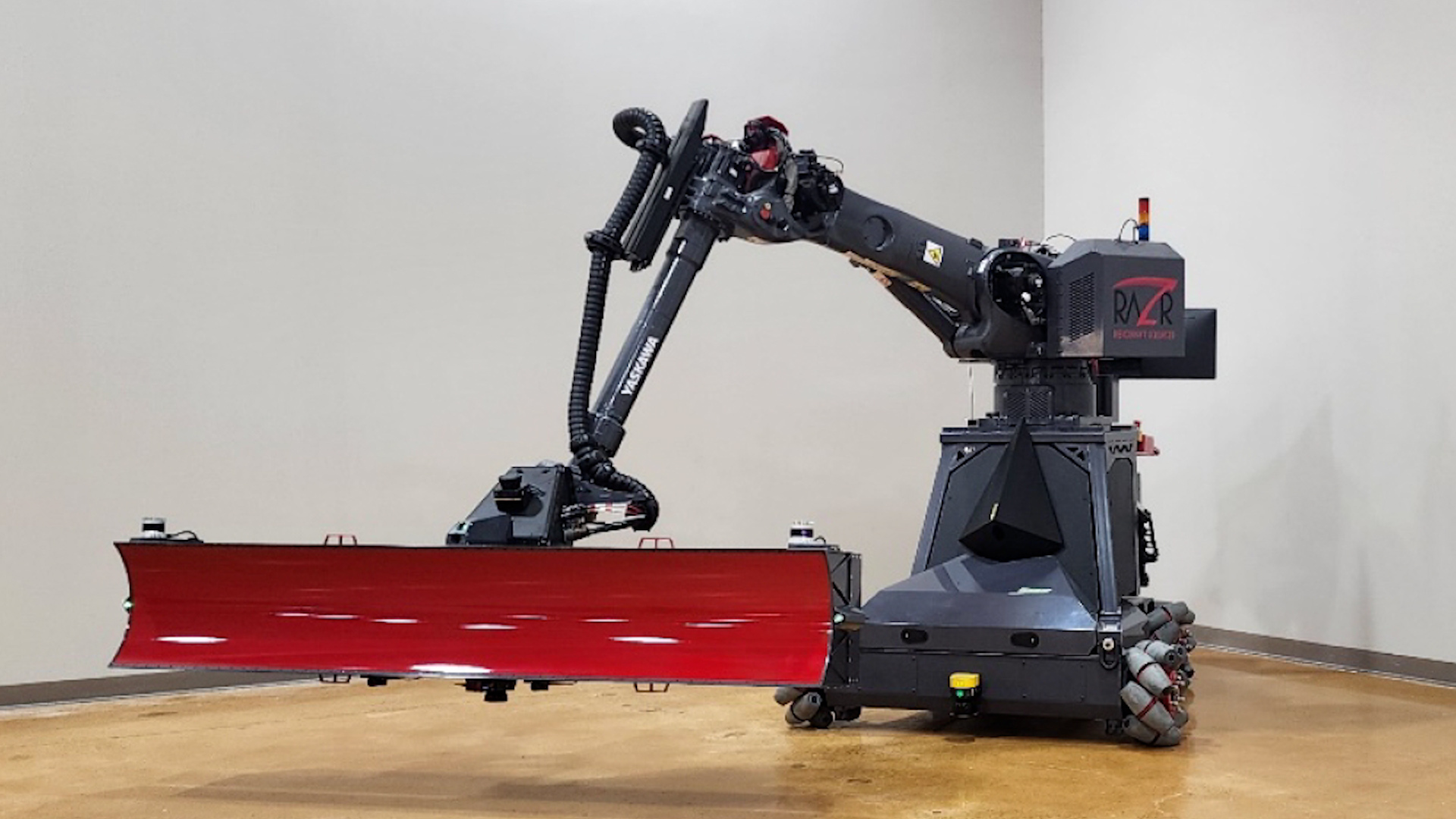
[Ryan]
STEALTH…
THE WORD ALONE CONJURES IMAGES OF LEGENDARY AIRCRAFT LIKE THE F-1-17 NIGHTHAWK. THE B-2 SPIRIT. THE F-22 RAPTOR. AND, OF COURSE, THE F-35 LIGHTNING II. WHILE THOSE ARE ALL DISTINCTLY DIFFERENT PLATFORMS, ONE THING TIES THEM ALL TOGETHER: GEOMETRY.
THESE PLANES ARE “STEALTH PLATFORMS” BECAUSE OF THEIR DESIGN.
EVERY ANGLE IS ABOUT REDUCING THEIR VISIBILITY TO RADAR. AND THE SLIGHTEST BEND, DENT, OR CHANGE IN STRUCTURE CAN ELIMINATE THEIR TACTICAL ADVANTAGE, MAKING THEM VISIBLE TO WOULD-BE ADVERSARIES.
AND THAT’S WHERE OUR WEAPON OF THE WEEK COMES IN.
MEET THE RAZR.
AT FIRST GLANCE, IT SORT OF LOOKS LIKE A ROBOTIC SNOW PLOW–AND IT MIGHT BE HARD TO FIGURE OUT WHAT IT DOES. BUT IN THE HANDS OF A SKILLED OPERATOR, IT COULD MEAN THE DIFFERENCE BETWEEN A MISSION’S SUCCESS OR FAILURE.
[Micah North, CEO, Resonant Sciences]
“What razor does is actually measures the radar cross section of a platform. And what we mean when we talk about radar cross section is, what do we actually look like to a threat radar? What do we look like to a threat system. And so we want to always understand what that looks like for, you know, even for acceptance testing, maintenance, all of those sorts of things. So ResNet is one of the first systems out there available to go out and actually, actually measure the signature of the platform in the hangar without having to go to a special facility or special lab or anything like that to be able to do
[Ryan]
And when you say, you know, in the hangar, just kind of like rolls around the plane.
[Micah North]
So actually, we’ll actually take shots, so specific shots, so maybe we want to look at a certain sector of the aircraft or a certain section of the aircraft, that’s how we do it. So we’ll go and basically we use the positioning system on there so we can we know where the shot is and where we want to make the shot. And so we will scan, and then scan the system with the lidars and figure out where we are relative to the outer mold line of the aircraft. And then the robot will actually move into place and get within, you know, about a millimeter or so of where it needs to be, so you get almost perfect alignment onto the platform. And so what that leads to is incredible repeatability and traceability. So over time, you know you’re measuring the exact same spot in the exact same area, so you can understand how things are changing on your platform over time.
[RYAN]
RAZR IS ACTUALLY AN ACRONYM, MEANING RESONANT ADAPTABLE ZONAL RADAR. IT’S ESSENTIALLY A STAND-ALONE ROBOT THAT TAKES A VERY PRECISE LOOK AT EVERY PIECE OF THE AIRCRAFT.
[Micah North]
“The radar cross section basically defines your detectability. So how soon are you going to be detected by an enemy threat system? So, by an enemy radar? So this goes back to what we would call low observable stealth platforms, those sorts of things. And so what the radar cross section is is basically a measure of how soon you’re going to get detected. And so what we want to be able to do is to know what that number is, so we know where we’re going to be seen.”
[RYAN]
WHILE IT IS A LARGE PIECE OF EQUIPMENT, IT’S NOT SO BIG THAT IT CAN’T TRAVEL TO WHEREVER MAINTENANCE CREWS ARE POSITIONED.
[Micah North]
“The whole idea between razor is to keep aircraft mission capable. So we want to keep aircraft in the air, and we want to make sure that they have that we’re putting the pilots in the best possible position to win in an unfair fight. And we want to be able to have them where they’re not going to be detected, or at least know where the detection is going to occur at so they can start planning their missions appropriately.”
[RYAN]
IT’S AN IMPRESSIVE PIECE OF TECHNOLOGY, SO MUCH SO THAT THE RESONANT SCIENCES TEAM AT THIS YEAR’S AIR, SPACE AND CYBER CONFERENCE WAS VISITED BY SECRETARY OF THE AIR FORCE FRANK KENDALL, WHO WANTED TO SEE THE RAZR FOR HIMSELF.
[Micah North]
“I think we’ve got 29 systems sold so far. So we’re starting, you’re starting to see them out in the wild a little bit more so. And you know, we’re hoping to continue to push these out there. We’re constantly innovating with the system, constantly adding new capability to it, refining the processing. So we’re really at the tip of the iceberg with razor.”











